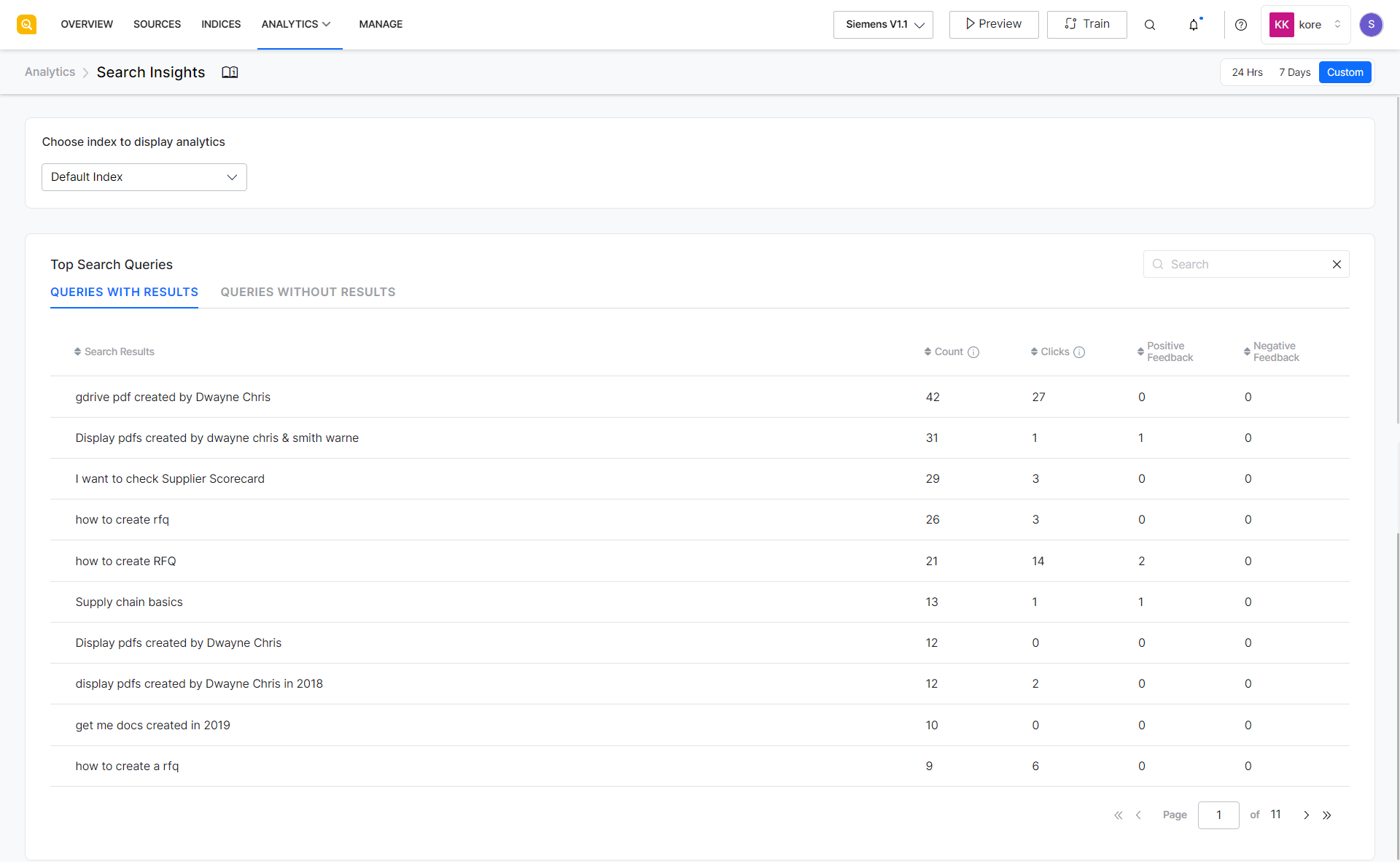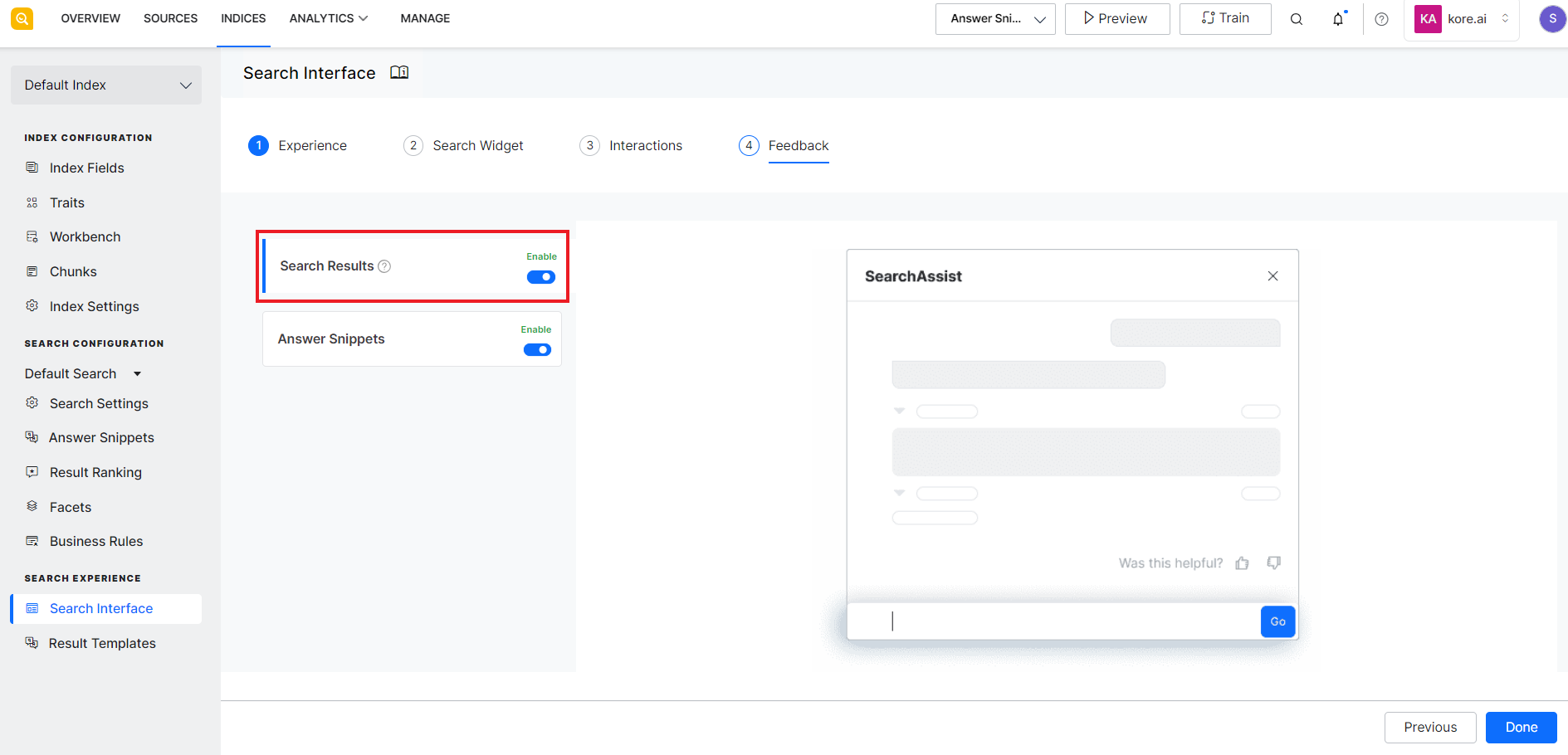This section provides insights on the search queries run by the end users. You can use these metrics to understand and improve the end-user search experience. For example, if a search query is run many times but did not return any results, then it can indicate that either the appropriate content is missing or the application needs fine-tuning to return relevant results. A sizable number of no results for a query is a significant insight that points to an area requiring attention.
This page displays the following metrics.
| Metrics | Description |
| Queries with Results | Most frequently asked queries that returned at least one result. For each query, it shows
Count – the number of times the search query was run Clicks – the number of times at least one of the results from the query was clicked. Positive feedback – feedback received when the user was able to find relevant results for the query. Negative feedback – feedback received when the user was unable to find relevant results for the query. |
| Queries without Results | Most frequently asked queries that returned no result along with the number of times that the query was asked. More details are shown for the queries when the user clicks on the view results for the query. |

